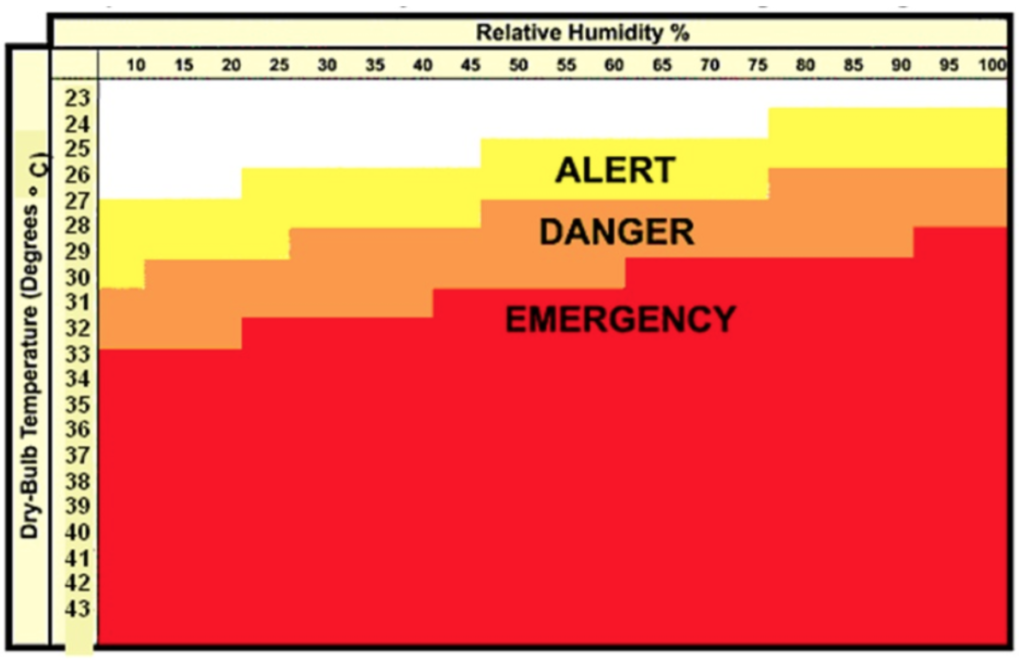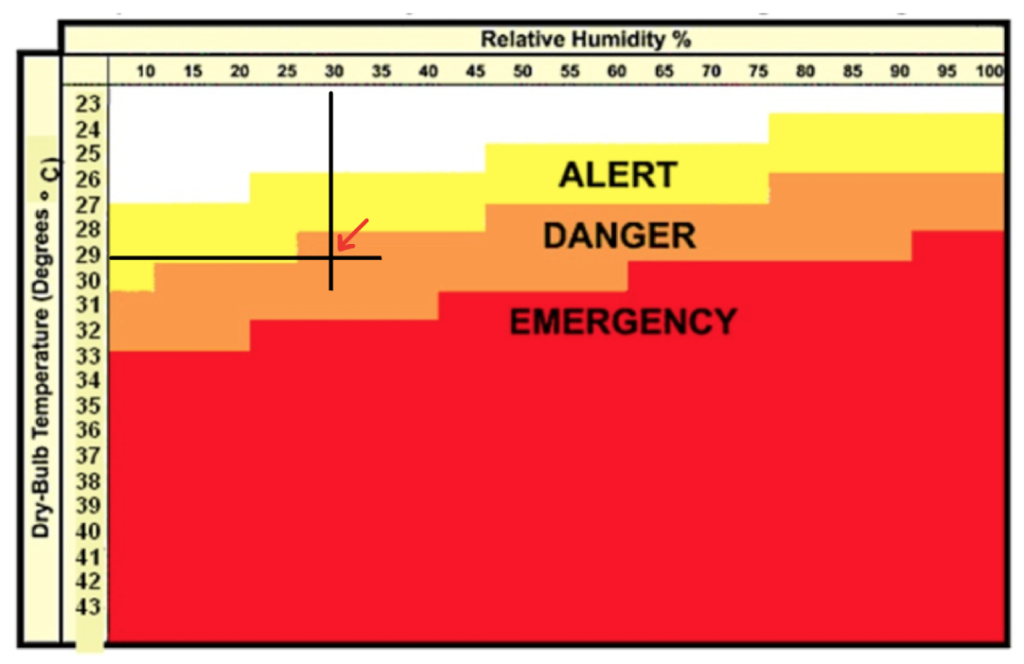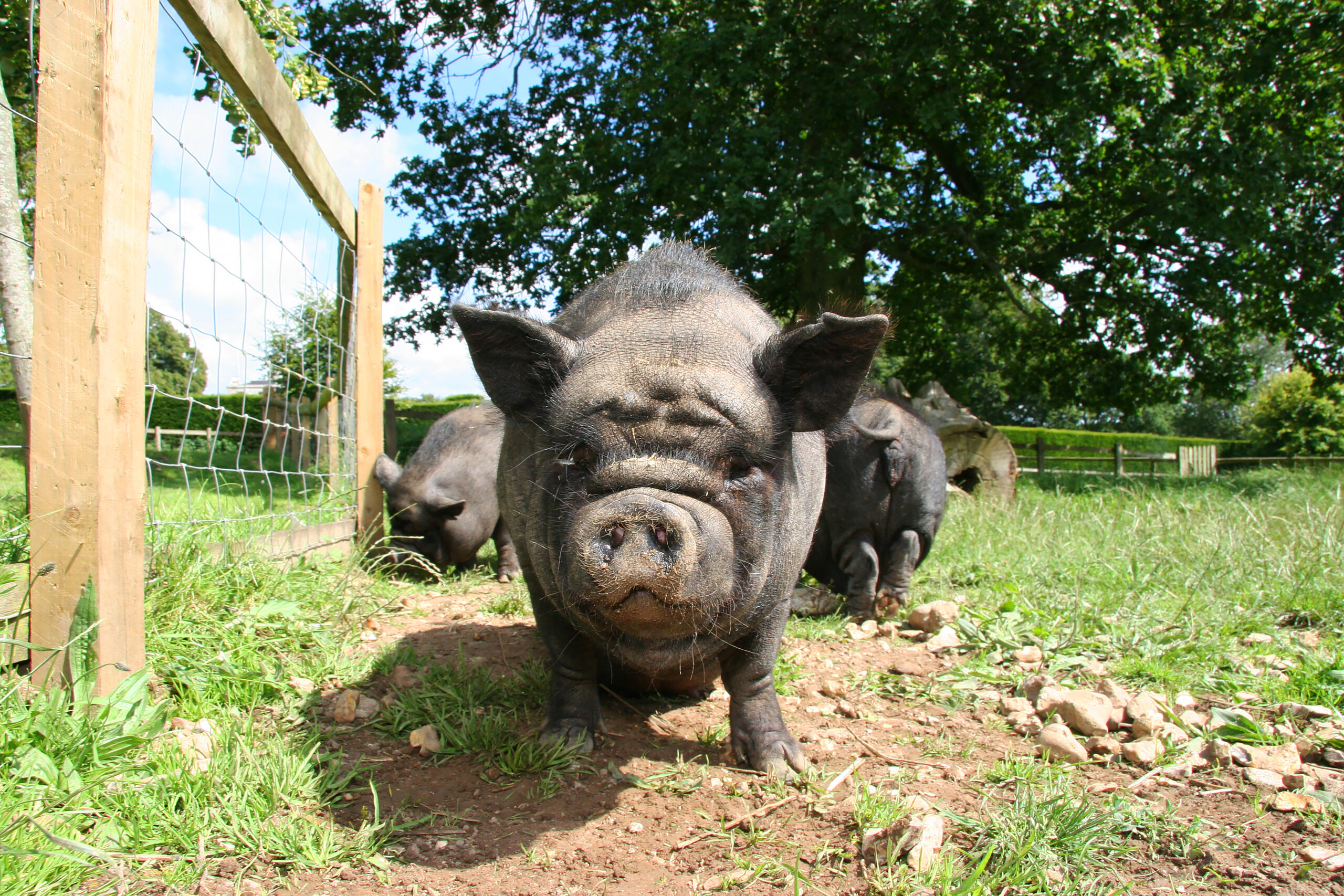Written by: Bria Osborne, OVC 2026
Edited by: Dr. Paisley Canning
As hot weather approaches it is important to be educated on heat stress, how it can affect your pig, and ways to prevent it.
What is heat stress?
Heat stress occurs when a pig’s internal body temperature rises due to an increase in the environment’s temperature.
When a pig gets too hot, their internal enzymes become unstable and cannot function. Therefore, over heating can result in severe illness and death in pigs.
It is much easier to prevent heat stress than it is to deal with it.
Why is heat stress a bigger concern for pigs compared to other animals?
Pigs do not have sufficient sweat glands to facilitate sweating and therefore cooling. Pigs often pant during hot weather, but due to their lungs being proportionally small compared to the rest of their body, it is not a good cooling mechanism. Pigs also have large subcutaneous fat stores which act as insulation, slowing the cooling process and contributing to overheating.
When pigs enter a state of heat stress, their internal defense systems are weakened, and bacteria can more easily penetrate their intestines and cause infections.
When should I be worried about heat stress?
Both rising ambient temperature and increasing humidity result in increased risk of heat stress.

Figure 1: Increasing ambient temperature (the environment’s temperature) and increasing relative humidity (of the environment) results in an increased risk for heat stress.
The following is a chart (figure 2) used to assess the heat stress risk for commercial pigs. It is a good reference to get an idea of the level of risk your pigs are at in terms of heat stress. It also helps you visualize the relationship between ambient temperature and humidity on the risk of heat stress.

Photo credit: https://www.agric.wa.gov.au/feeding-nutrition/heat-stress-pigs
Figure 2: The vertical scale represents the “dry-bulb” temperature (I.e the ambient temperature of the environment) and the horizontal scale represents the relative humidity of the environment.
Figure 3 below shows how to use the figure 2 chart to assess your pig’s heat stress risk. In this example, the “dry bulb” temperature (i.e the temperature of the environment) is 29 degrees Celsius and the relative humidity (of the environment) is 30%. To figure out the risk of heat stress, draw a line down from 30 degrees Celsius and across from 29 degrees Celsius. Where the two lines cross each other, as indicated by the red arrow, shows which area of risk you pig is in. In this example, pigs are in “danger” of getting heat stress.

Photo credit: https://www.agric.wa.gov.au/feeding-nutrition/heat-stress-pigs
Figure 3: In this example the “dry bulb temperature” (I.e the temperature outside) is 29 degrees Celsius and the relative humidity is 30%. By drawing a line down from the relative humidity and across from the “dry bulb temperature” you can determine what risk your pig is at for heat stress by looking to see where the lines cross. In this example, pigs are in “danger” of getting heat stress as shown by the red arrow.
The heat stress chart (figure 2) is also helpful at visualizing the relationship between “dry bulb” (ambient) temperature and relative humidity in terms of increasing the risk of heat stress. For example, 25 degrees Celsius with low humidity is a totally safe temperature for your pig to be in, however, once the relative humidity hits 45%, your pig is now in the “alert” zone meaning that you should be taking precautions to prevent heat stress.
Signs your pig is experiencing heat stress
- Panting
- Increased respiratory rate
- Decreases appetite
- Diarrhea
- Lethargy
Tips on how to reduce/prevent heat stress in pet pigs
- Consider bringing your pig inside where it is temperature controlled
- Ensure access to clean and fresh water
- Provide access to shady areas
- Provide access to a wallow (figure 5). Mud is a great way to provide some heat protection and cooling to your pig
- Consider feeding your pig early in the morning or late at night when the temperature isn’t as hot
- Make sure that there is adequate airflow (consider providing a fan)
- You can pour or sprinkle droplets of cool water over your pig
- be very careful with misters spraying fine water droplets as they can increase the local humidity in the air around the pig and accelerate your pigs heat stress
- Talk to your vet about supplementing electrolytes
- Ensure that your pig has access to shade
- Consider getting your pig a kiddie pool to lay in (figure 4)
- Do not book hoof trimming or physically demanding activities with your pigs on hot weather dates
- BE PREPARED WITH HEAT STRESS REDUCTION PLAN AHEAD OF WARM WEATHER!!

Photo credit: https://www.huffpost.com/entry/pig-for-adoption_n_5324476
Figure 4: Above is a pet pig using a kiddie pool and water to cool off

Figure 5: Above is a potbellied pig wallowing in mud to keep cool.
References:
https://www.agric.wa.gov.au/feeding-nutrition/heat-stress-pigs
Potbellied Pig Veterinary Medicine by Kristie Mozzachio

